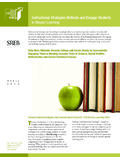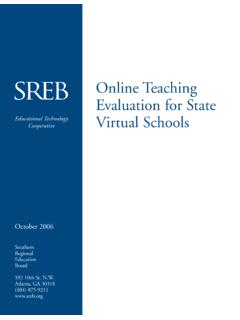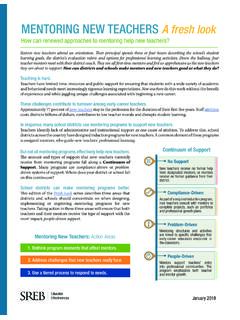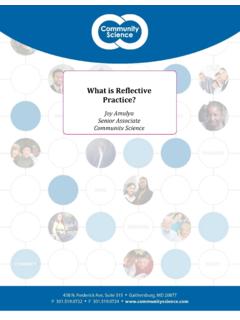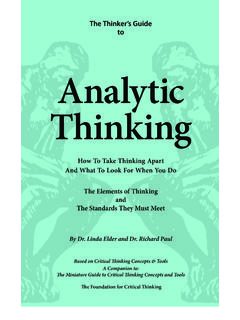Transcription of Instructional Strategies Motivate and Engage …
1 Instructional Strategies Motivate and Engage Students in Deeper LearningInstructional Strategies are becoming increasingly diverse as teachers tap into students interests and abilities to help them absorb academic and career/technical subjects that will improve their chances of success in college and careers. Teachers are increasing the number of challenging assignments that Engage all students in displaying creativity, problem solving and research skills as they learn the content essential to succeed in life. Technology has been a boon to teachers and students in making learning come alive and hold the interest of all 10th Street, , GA 30318(404) Help More Students Become College and Career Ready by Successfully Engaging Them in Reading Complex Texts in Science, Social Studies, Mathematics and Career/Technical ClassesT eacher effectiveness is vital in determining whether students learn in the classroom.
2 Too many classrooms are characterized by low-level assignments rather than diverse Instructional Strategies that actively Engage students in deeper learning, according to Tom Dewing, consultant for Silver Strong and Associates in Ho Ho Kus, New Jersey. Completing more complex assignments is key. Engagement is the key to learning. When students actively participate and pursue knowledge, they are preparing for life after high school, he noted the word strategy is based on two Greek words stratos, meaning a multitude or an army, and agein or ago meaning lead, guide or move. A teaching strategy, Dewing said, is an Instructional management plan that describes the role of the teacher and student and promotes particular patterns of thought to achieve specifi c learning goals. Research-Based Strategies Help Teachers Build Students 21st-Century Learning Skills2 Types of EngagementEngagement types include intellectual, social, emotional and behavioral.
3 Students understand how teachers relate to the subject matter, Dewing said. If a teacher is passionate and knowledgeable about a subject, students will respond with enthusiasm and interest. Dewing points to the knowing-doing gap as the biggest hurdle for any school or teacher in enhancing learning for students. Teachers must fi nd a way to bridge the gap between what they know about good instruction and what they do in the classroom, Dewing said. The degree to which teachers are able to implement best practices in the classroom in a thoughtful, meaningful way determines the performance of a school or a student. To overcome the knowing-doing gap, Dewing said educators must understand clearly what the Common Core State Standards (CCSS) and other rigorous standards are asking educators and students to do. According to its mission statement, the CCSS initiative aims to provide a consistent, clear understanding of what students are expected to learn, so teachers and parents know what they need to do to help them.
4 The standards are designed to be robust and relevant to the real world, refl ecting the knowledge and skills that our young people need for success in college and careers. With American students fully prepared for the future, our communities will be best positioned to compete successfully in the global economy. Lively ClassroomsOne major way to accomplish a lively classroom with hands-on learning is to enhance literacy: Emphasize teaching the reading of informational texts. Steadily increase the ability of students to understand more complex materials over time. Integrate research skills across standards and grades. Write to argue, inform and explain to prepare students for college-level assignments. Promoting literacy is a shared responsibility for all content teachers, not just English/language arts teachers, Dewing said.
5 Literacy plays an important role in teaching and learning math, science, history, art and career/technical can improve students reading and writing skills by getting them to read for meaning: Give students a list of agree or disagree statements about assigned texts. Ask students to preview the statements and begin reading the text. Ask students to indicate whether they agree or disagree with the statements based on what they read. Have students justify their agree/disagree positions by citing appropriate evidence from the text. Applying the rigorous Strategies outlined in the CCSS in all school subjects not only will improve the learning experiences of students in the middle grades and high school but will provide a strong foundation on which to pursue their aspirations after graduation, Dewing is co-author with Harvey Silver and Matthew Perini of The Core Six: Essential Strategies for Achieving Excellence with the Common Core.
6 The book is designed to help teachers look at the Common Core State Standards and implement six Strategies that teach to the common threads that the standards are asking to be implemented, Dewing Dewing: The Sweet Spot of Engagement Boosts Student LearningIt is important for teachers to fi nd the sweet spot for engaging all students in learning, according to Steve Barkley, executive vice president of Performance Learning Systems, Inc., in Madison, Georgia. At the same time, he acknowledges that competition for student engagement has changed over the years. Many students today enter the classroom from the real world where they Engage with electronic gadgetry, sports activities and other events. Barkley suggests placing emotion and engagement on a continuum that begins with fear and ends with bored. Learning is minimized at both ends of the scale, he We need to eliminate school and classroom cultures based on fear, where students experience threats, embarrassment and/or violence and where learning is secondary to safety, Barkley said.
7 However, when students exhibit characteristics of boredom, teachers need to raise the anxiety level by increasing requirements through additional rigor or depth of learning. If students begin to show anxiety, the teacher must reduce that feeling. One way is for students to complete challenging assignments by working together in pairs or groups. 3 Barkley said the ideal emotional learning spot the sweet spot lies between fear and attention. Tutoring pays off because effective tutors hold students in that position. If tutors see students getting comfortable with learning, they continue, Barkley said. If they see students getting anxious, they give more practice. Master teachers monitor constantly to sense when students are moving from the sweet spot of attention to the comfort spot; then they take action to bring students back to the high side of attention.
8 Barkley said teachers must know their students and be skilled at adjusting the pace, assignments and Strategies to maximize shared fi ve types of engagement as described by author Phil Schlechty: Engagement Students are attentive and focused on the task with commitment and persistence; they volunteer personal resources of time, effort and attention. Strategic Engagement Students are willing to do the work as long as extrinsic rewards are present. Remove the reward (grades) and students withdraw their effort. Students in this case ask, Will this be graded? How many points? Does this count? Ritual Compliance Students want assurance that what they do will pay off in grades and improved chances for college. This scenario generally requires supervision. Producing the work with minimal effort could mean copying work or cheating on an exam.
9 Retreatism This action manifests lack of compliance in passive ways, such as withdrawing from a task. If challenged, students may move to compliance or rebellion. Teachers often overlook retreatism. Rebellion This action focuses attention on something else and often is seen as fi ve types of engagement can be related on the emotional continuum with engaged learning occurring at the sweet spot. Behavioral engagement is when students exhibit on-task behaviors, including persistence with challenging tasks, asking questions and requesting help, Barkley said. Intellectual engagement is deep involvement and effort by students to understand a concept or master a skill. Emotional engagement is when students exhibit high interest, a positive attitude, curiosity and task involvement. Barkley emphasized that people desire or volunteer to do things because they matter and are interesting.
10 He said the goal of education is to create self-direction in students. It is essential to design instruction that helps students connect with learning while developing autonomy, mastery and purpose, Barkley said. In a survey conducted by Vito Perrone, former professor at the Harvard Graduate School of Education, students reported that they were most engaged intellectually when involved in defi ning learning content, when they had time to wonder and fi nd a particular direction that interested them and when topics had a strange quality something common viewed in a new way, evoking a can a teacher who is required to teach standards maintain control and autonomy in the classroom? Barkley suggested teachers need to connect real life to the content being taught to get the emotional engagement that draws students to learning. He encouraged teachers to fi nd the sweet spot of student engagement to be successful in preparing students for further education and Barkley: Spot4 Challenging Students to Read More in Literature and History ClassesT wo teachers and a librarian at Monarch High School (MHS) in Louisville, Colorado, challenged students in literature and history classes to read 2,500 pages during the 2011-2012 school year.
